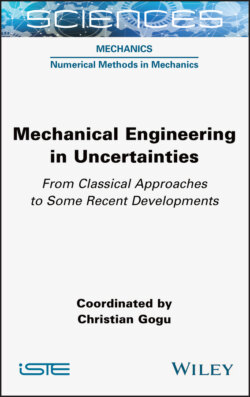Читать книгу Mechanical Engineering in Uncertainties From Classical Approaches to Some Recent Developments - Группа авторов - Страница 25
1.7.3. Rules for combining possibility distributions
ОглавлениеPossibility theory addresses the problem of quantifying uncertainties when solely based on expert opinion, which will assign likelihood levels to different values of the quantity of interest via possibility distributions Π(x) (typically via triangular or trapezoidal distributions). One of the fundamental questions that then arises is how to deal with divergent expert opinions. For this purpose, different rules for combining possibility distributions have been established.
Let Π1 and Π2 be two possibility distributions. These distributions can be aggregated according to the following rules:
– the conjunctive mode: this is the equivalent of the intersection of events. It corresponds to retaining only the consensus (the common area under the two distributions). This consensus is typically renormalized in order to satisfy the possibilistic axioms;
– the disjunctive mode: this is the equivalent of the union of events. It corresponds to the union of the two distributions;
– the intermediate mode (proposed by Dubois and Prade 1992): as its name indicates, this is an intermediate mode between the two previous ones. By defining the consensus, that is, the upper possibility bound following the intersection of the two distributions, by h, the distribution of the intermediate mode is defined by:
[1.19]
These three modes of combination usually make it possible to combine distributions of possibility from different sources (experts, for example). If there is good agreement between the sources (for example, trapezoidal distributions with overlapping cores), then either the connective or disjunctive modes are both well suited. The choice between the two depends on whether one wishes to consider only consensus or whether one wishes to integrate divergent views as well.
In the absence of good agreement between sources (for example, trapezoidal distributions with non-overlapping kernels), the conjunctive and disjunctive modes are less well suited. The disjunctive mode introduces a multimodal distribution (two peaks), which is generally not desirable in terms of quantifying and propagating uncertainties. The conjunctive mode by itself is too limiting, as it only considers consensus, which can be very limited or even null. The intermediate mode is a proposed solution to resolve these two problems associated with the conjunctive and disjunctive modes. It should be noted that variations on the intermediate mode have also been proposed in order to give more confidence to one distribution (in other words, an expert) than to another. The reader may refer to Dubois and Prade (1992) for more information.
